 W
WThe Ikema Wetland are wetlands in the center of Ikema Island, Miyahojima, Okinawa, Japan. It is also called Yunimui or Īnubū in the local dialect. The wetland area extends for 38 hectares and is the largest in Okinawa Prefecture. The "Wetlands and Coral Reefs of Ikema-jima" have been selected by the Ministry of the Environment as one of the "500 Important Wetlands in Japan" (日本の重要湿地500) and the entire island, totaling 282 hectares. It was designated a Wildlife Protection Area on November 1, 2011.
 W
WLake Akan is a lake in Kushiro, Hokkaidō, Japan. It is located in Akan National Park and is a Ramsar Site.
 W
WLake Biwa is the largest freshwater lake in Japan, located entirely within Shiga Prefecture, northeast of the former capital city of Kyoto. Lake Biwa is an ancient lake, over 4 million years old. It is estimated to be the 13th oldest lake in the world. Because of its proximity to the ancient capital, references to Lake Biwa appear frequently in Japanese literature, particularly in poetry and in historical accounts of battles.
 W
WFujimae-higata (藤前干潟) is a tidal flat beside the Port of Nagoya in Aichi Prefecture, Japan. A campaign to stop further development has made Fujimae a symbol of the wetland conservation movement in Japan. Once celebrated in the Man'yōshū, the remaining 323 ha of wetlands have been designated a Ramsar Site.
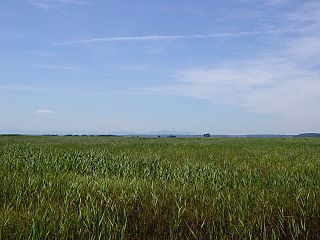 W
WHotokenuma (仏沼) is a wetland area located in the northern part of the city of Misawa, Aomori Prefecture, in the northern Tōhoku region of Japan. The wetland is connected to the eastern shores of Lake Ogawara at the base of the Shimokita Peninsula.
 W
WLake Hyōko (瓢湖) is a 281-hectare (690-acre) reservoir area in the city of Agano, Niigata, Japan.
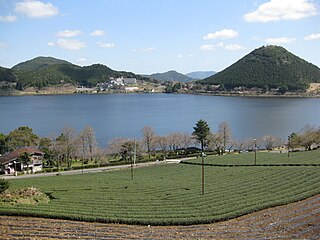 W
WImuta-ike (藺牟田池) is a freshwater caldera lake in Satsumasendai, Kagoshima Prefecture, Japan. It forms part of Imutaike Prefectural Natural Park. Its plant communities were designated a Natural Monument of Japan in 1921 and sixty hectares of wetlands were designated a Ramsar Site in 2005.
 W
WIzunuma and Uchinuma (伊豆沼・内沼) are a pair of interconnected freshwater lakes in the alluvial plain of the Hasama River, a tributary of the Kitakami River in Miyagi Prefecture, Japan. In 1967 the birdlife and habitat of the lakes were designated a Natural Monument. In 1985 an area of 559 hectares was designated a Ramsar Site. In 1996 the sound of the Izunuma-Uchinuma greater white-fronted goose was selected as one of the 100 Soundscapes of Japan by the Ministry of the Environment.
 W
WKasai Rinkai Park is a park in Edogawa, Tokyo, Japan, which officially opened on June 1, 1989. The park includes a bird sanctuary and the Tokyo Sea Life Park aquarium. It was built on reclaimed land which includes two manmade islands, an observation deck and a hotel. It is the second-largest park in the 23 wards of Tokyo.
 W
WKejyonuma Dam is an earthen dam in the city of Ōsaki, Miyagi Prefecture, Japan, completed in 1995. The dam crosses the Tajiri River, a branch of the Kitakami River and utilises the basin of a pre-existing natural lake.
 W
WThe Kerama Islands are an island group 32 kilometres (20 mi) southwest of Okinawa Island in Japan. Historically, the islands were part of the Ryukyu Kingdom, and for some 600 years, islanders were employed as navigators on the kingdom’s trading vessels to China.
 W
WKiritappu Wetland is a 3,168ha. wetland area in Hamanaka-cho, Akkeshi District, Hokkaidō, Japan. It is also called Wetland of flowers (花の湿原) because numerous flowers can be seen in summer.
 W
WKumejima is a town located in Shimajiri District, Okinawa Prefecture, Japan. The town consists of the islands of Kume, Ōjima, Ōhajima, Torishima, and Iōtorishima. Among the islands, only Kumejima and Ōjima are populated. Kumejima is located approximately 100 kilometres (62 mi) west of Naha. The town can be accessed by the New Kumejima Ferry, Japan Transocean Air, or Ryukyu Air Commuter. Kumejima Airport serves the island. As of 2016, the town had an estimated population of 7,647 and a population density of 120 persons per km². The total area is 63.50 km2 (24.52 sq mi).
 W
WKushiro-shitsugen National Park is a national park located in the east of the island of Hokkaido, Japan. It was designated as a national park on 31 July 1987. The park is known for its wetlands ecosystems.
 W
WAkkeshi-ko (厚岸湖) is a brackish lake near Akkeshi in Hokkaidō, Japan. The wetlands of Lake Akkeshi and Bekanbeushi Marsh (別寒辺牛湿原) have been designated a Ramsar Site.
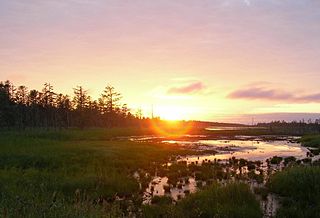 W
WFūren-ko (風蓮湖) is a brackish lake near Nemuro in Hokkaidō, Japan. The wetlands of Lake Furen and the shunkuni-tai (春国岱) dunes have been designated a Ramsar Site.
 W
WLake Tōfutsu is located in Abashiri and Koshimizu, Hokkaidō, Japan. It takes its name from the Ainu toputsu, or 'mouth of the lake'. A saline lagoon divided from the Sea of Okhotsk by sand dunes, Lake Tōfutsu provides an important habitat for wintering birds. In 2005 an area of 900 ha of wetlands was designated a Ramsar Site.
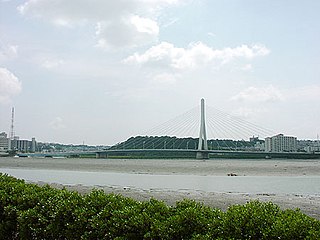 W
WLake Man is an area of wetlands in Okinawa that is located between the cities of Naha and Tomigusuku, and within Manko Park. Despite being called "Lake Man", it is in fact a wetland and not a lake. Lake Man covers .11 square kilometres (0.042 sq mi).
 W
WMidagahara is a wetlands located near Tateyama in Toyama Prefecture, in Japan. the remaining 80,000 ha of wetlands have been designated a Ramsar Site in 2012.
 W
WMikata Five Lakes , also called the Five Lakes of Mikata, are a series of brackish and freshwater lakes located in Mihama and Wakasa, Fukui, Japan, which are close to the coast of Wakasa Bay. They consist of Lakes Mikata (三方湖), Suigetsu (水月湖), Suga (菅湖), Kugushi (久々子湖) and Hiruga (日向湖). These five lakes are all located in Wakasa Wan Quasi-National Park. In 2005 the lakes were designated as a Ramsar site. The Lake Suigetsu is famous for its varves, which were adopted as a global standard for dating geological and historical relics in 2012.
 W
WMurodo is a Volcanic plateau located near Tateyama in Toyama Prefecture, central Honshu, in Japan.
 W
WNakaumi (中海) is a brackish lake located between Tottori and Shimane prefectures in Japan. The lake is enclosed by the Shimane Peninsula to the north and Yumigahama Peninsula to the east. It is the fifth largest lake in surface area in Japan.
 W
WOdashirogahara (小田代ヶ原) is a marshland located near Nikkō in Tochigi Prefecture, Japan, west of the river Yukawa.
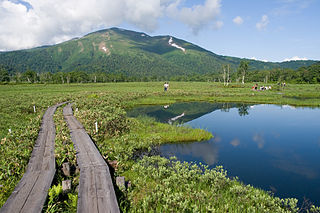 W
WOze National Park , is an area consisting of open greenland in Fukushima, Tochigi, Gunma and Niigata Prefectures in Japan. The park is 372 km² in area and is the 29th national park in Japan.
 W
WOze Marshland is a high altitude marshland in the Oze National Park, Japan.
 W
WSarobetsu-genya (サロベツ原野), derived from the Ainu sar (marsh) and pet (river), is a coastal plain and low-lying moor in northwestern Hokkaidō, Japan. With an area of approximately 20,000 ha or 200 km2 (77 sq mi), it forms part of the Rishiri-Rebun-Sarobetsu National Park, and its wetlands are a Ramsar Site.
 W
WSenjōgahara (戦場ヶ原) is a 4 square kilometres area in Tochigi Prefecture, Japan, in the city of Nikkō. It is 1,400 metres above sea-level.
 W
WLake Shinji is a lake in the northeast area of the Shimane Prefecture in Japan. The lake is the seventh largest in Japan, with a circumference of 48 kilometres (30 mi). It is enclosed by the Shimane Peninsula to the north, and the Izumo and Matsue plains to the west and east respectively. 7,652 ha of wetland are a Ramsar Site.
 W
WYakushima (屋久島) is one of the Ōsumi Islands in Kagoshima Prefecture, Japan. The island, 504.88 km2 (194.94 sq mi) in area, has a population of 13,178. Access to the island is by hydrofoil ferry, slow car ferry, or by air to Yakushima Airport . Administratively, the whole island is the town of Yakushima. The town also serves neighbouring Kuchinoerabujima. The majority of the island is within the borders of the Kirishima-Yaku National Park.
 W
WYatsu-higata (谷津干潟) is a tidal flat in Narashino, Chiba Prefecture, Japan, 2 km from Tokyo Bay. Once a part of the largest tidal flats in Japan, much of the area has been reclaimed. Forty hectares of wetland were designated a Ramsar Site in 1993.